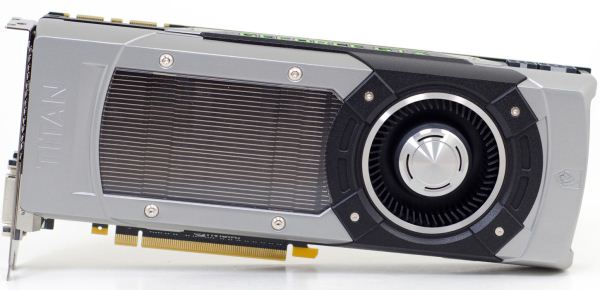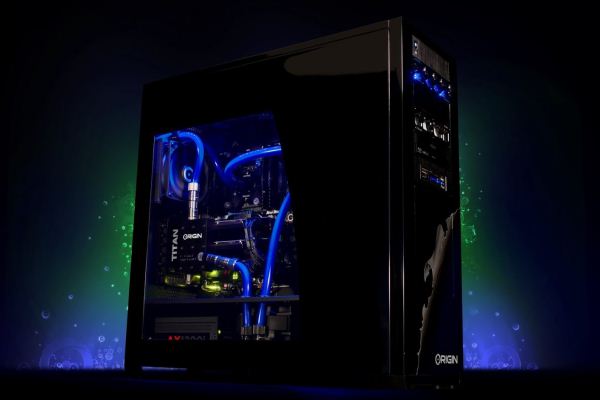NVIDIA’s GeForce GTX Titan Review, Part 2: Titan's Performance Unveiled
by Ryan Smith & Rahul Garg on February 21, 2013 9:00 AM ESTFinal Thoughts
Bringing things to a close, most of what we’ve seen with Titan has been a long time coming. Since the introduction of GK110 back at GTC 2012, we’ve had a solid idea of how NVIDIA’s grandest GPU would be configured, and it was mostly a question of when it would make its way to consumer hands, and at what clockspeeds and prices.
The end result is that with the largest Kepler GPU now in our hands, the performance situation closely resembles the Fermi and GT200 generations. Which is to say that so long as you have a solid foundation to work from, he who builds the biggest GPU builds the most powerful GPU. And at 551mm2, once more NVIDIA is alone in building massive GPUs.
No one should be surprised then when we proclaim that GeForce GTX Titan has unquestionably reclaimed the single-GPU performance crown for NVIDIA. It’s simply in a league of its own right now, reaching levels of performance no other single-GPU card can touch. At best, at its very best, AMD’s Radeon HD 7970GE can just match Titan, which is quite an accomplishment for AMD, but then at Titan’s best it’s nearly a generation ahead of the 7970GE. Like its predecessors, Titan delivers the kind of awe-inspiring performance we have come to expect from NVIDIA’s most powerful video cards.
With that in mind, as our benchmark data has shown, Titan’s performance isn’t quite enough to unseat this generation’s multi-GPU cards like the GTX 690 or Radeon HD 7990. But with that said this isn’t a new situation for us, and we find our editorial stance has not changed: we still suggest single-GPU cards over multi-GPU cards when performance allows for it. Multi-GPU technology itself is a great way to improve performance beyond what a single GPU can do, but as it’s always beholden to the need for profiles and the inherent drawbacks of AFR rendering, we don’t believe it’s desirable in situations such as Titan versus the GTX 690. The GTX 690 may be faster, but Titan is going to deliver a more consistent experience, just not quite at the same framerates as the GTX 690.
Meanwhile in the world of GPGPU computing Titan stands alone. Unfortunately we’re not able to run a complete cross-platform comparison due to Titan’s outstanding OpenCL issue, but from what we have been able to run Titan is not only flat-out powerful, but NVIDIA has seemingly delivered on their compute efficiency goals, giving us a Kepler family part capable of getting far closer to its theoretical efficiency than GTX 680, and closer than any other GPU before it. We’ll of course be taking a further look at Titan in comparison to other GPUs once the OpenCL situation is resolved in order to come to a better understanding of its relative strengths and weaknesses, but for the first wave of Titan buyers I’m not sure that’s going to matter. If you’re doing GPU computing, are invested in CUDA, and need a fast compute card, then Titan is the compute card CUDA developers and researchers have been dreaming of.
Back in the land of consumer gaming though, we have to contend with the fact that unlike any big-GPU card before it, Titan is purposely removed from the price/performance curve. NVIDIA has long wanted to ape Intel’s ability to have an extreme/luxury product at the very top end of the consumer product stack, and with Titan they’re going ahead with that.
The end result is that Titan is targeted at a different demographic than GTX 580 or other such cards, a demographic that has the means and the desire to purchase such a product. Being used to seeing the best video cards go for less we won’t call this a great development for the competitive landscape, but ultimately this is far from the first luxury level computer part, so there’s not much else to say other than that this is a product for a limited audience. But what that limited audience is getting is nothing short of an amazing card.
Like the GTX 690, NVIDIA has once again set the gold standard for GPU construction, this time for a single-GPU card. GTX 680 was a well-built card, but next to Titan it suddenly looks outdated. For example, despite Titan’s significantly higher TDP it’s no louder than the GTX 680, and the GTX 680 was already a quiet card. Next to price/performance the most important metric is noise, and by focusing on build quality NVIDIA has unquestionably set the new standard for high-end, high-TDP video cards.
On a final note, normally I’m not one for video card gimmicks, but after having seen both of NVIDIA’s Titan concept systems I have to say NVIDIA has taken an interesting route in justifying the luxury status of Titan. With the Radeon HD 7970 GHz Edition only available with open air or exotic cooling, Titan has been put into a position where it’s the ultimate blower card by a wide margin. The end result is that in scenarios where blowers are preferred and/or required, such as SFF PCs or tri-SLI, Titan is even more of an improvement over the competition than it is for traditional desktop computers. Or as Anand has so eloquently put it with his look at Falcon Northwest’s Tiki, when it comes to Titan “The days of a high end gaming rig being obnoxiously loud are thankfully over.”
Wrapping things up, on Monday we’ll be taking a look at the final piece of the puzzle: Origin’s tri-SLI full tower Genesis PC. The Genesis has been an interesting beast for its use of water cooling with Titan, and with the Titan launch behind us we can now focus on what it takes to feed 3 Titan video cards and why it’s an impeccable machine for multi-monitor/surround gaming. So until then, stay tuned.












337 Comments
View All Comments
UzairH - Thursday, February 21, 2013 - link
Ah ok, thanks for the explanation Ryan. Fair enough if the game is CPU bound, and your policy sounds fair as well. Please note however that at high resolutions enabling SSAO kills the performance, and enabling Transparency Anti-aliasing on top of that even more so, so even without mods Skyrim can still be pretty brutal on cards like the 670 and HD 7970.CeriseCogburn - Thursday, February 21, 2013 - link
LOL ignore the idiocy and buy the great nVidia card, you'll NEVER have to hear another years long screed from amd fanboys about 3G of ram being future-proof -ESPECIALLY WITH SKYRIM AND ADDONS!!!!As they screamed endlessly....
CeriseCogburn - Saturday, February 23, 2013 - link
It's a bunch of HOOEY no matter how reasonable "the policy" excuse sounds...http://www.bit-tech.net/hardware/2013/02/21/nvidia...
There's the Skyrim results, with TITAN 40+% ahead.
trajan2448 - Friday, February 22, 2013 - link
AMDs fps numbers are overstated. They figured out a trick to make runt frames, or frames which are not actually rendered to trigger the fps monitor as a real fully rendered frame. This is real problem for AMD much worse than the latency problem. Crossfire is a disaster which is why numerous reviewers including Tech Report have written that Crossfire produces higher fps but feels less smooth than Nvidia.Check this article out. http://www.pcper.com/reviews/Graphics-Cards/NVIDIA...
Ankarah - Thursday, February 21, 2013 - link
From a regular consumer's point of view, the hype it being the fastest 'single' graphics card doesn't really appeal that much - it doesn't make a difference to me how these video cards work in what configurations underneath its big case, as long as it does its job.So I really can't understand why any regular consumer would intentionally choose this over the 690GTX, which seems to be faster overall for the same price, unless you belong to perhaps 0.5% of their market share where you absolutely require FP64 executions for your work but don't really need the full power of Tesla.
And let's face it, if you are willing to shell out a grand for your graphics card for your PC, you aren't worried about the difference their TDP will make on your electric bills.
So I think it's just a marketing circus specifically engineered to draw in a lucky few, to whom money or price/performance ratio holds no value at all - there's nothing to see here for regular Joes like you and me.
Let's move along.
sherlockwing - Thursday, February 21, 2013 - link
This card is for people willing to spend at least $2K on their Graphic cards and don't want to deal with Quad GPU scaling while also having room for a Third. If you don't have that much cash you are not in its target audience.Ankarah - Thursday, February 21, 2013 - link
That makes sense,so this card, however we slice it, is only for about perhaps 1% of the consumer base if even that.
andrewaggb - Thursday, February 21, 2013 - link
pretty much. And bragging rights.CeriseCogburn - Thursday, February 21, 2013 - link
not for the crybabies we have here.Yet go to another thread and the screaming about the 7990 and the endless dual top end videocard setups with thousand dollar INTEL cpu's will be endless.
It all depends on whose diapers the pooing crybabies are soiling at the moment.
cmdrdredd - Thursday, February 21, 2013 - link
Plus people who want to break world records in benchmarking.